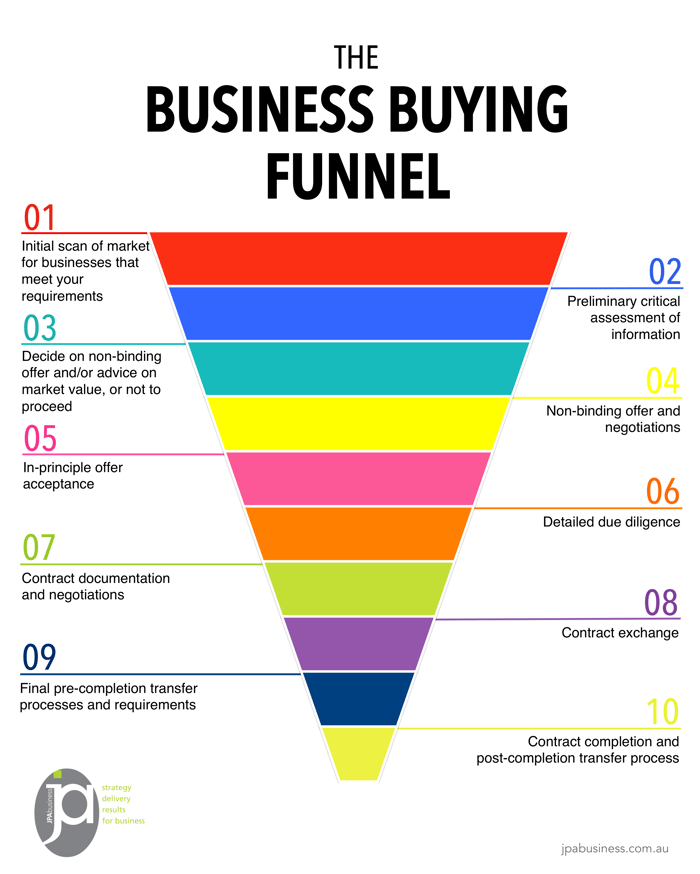When assessing different business acquisition opportunities, I tell business buying clients to imagine the process as a funnel.
At the top, the funnel is wide and it has a screen ‘sifting against your requirements’.
This is where you look broadly at businesses that might suit you, based on your specific requirements such as:
- geography
- size and turnover
- earnings
- price
- product or service
- customer base, etc.
Basic information gathering
While you’re at the top of the funnel, secure some initial information on the business that helps you and your advisor, if you’re utilising one, assess the performance and core attributes of the business.
In particular, find out:
- Does this business have a positive earnings performance?
- Are earnings on an upward trend or a downward trend?
- Is there a point of difference in the business that goes to achieving business maintainable earnings (BME)?
- Does this business fit your most important requirements (investment level, return, industry sector and risk profile, future potential etc.)?
Taking the next step – a non-binding offer
The next step is to ask the threshold question: ‘Based on the information I have, do I feel confident to put in a non-binding offer on this business, or are there gaps in the information I have received which makes it difficult to assess the real value of the business?’
If you feel confident, then put in a non-binding offer – this will test the expectations of the vendor. If you put this in writing it will emphasise your credibility and serious intent to the business owner.
If you’re not confident, you may need to seek additional advice, such as an independent valuation or market appraisal on the business.
But remember you’re still at the top of the funnel – don’t get lost in the detail at this stage.
Moving down the funnel
So, you’ve got to your first offer and acceptance stage.
You’ve put forward a non-binding offer, the vendor has come back and said ‘I would accept that but only on the basis of X and Y’ or ‘I wouldn’t accept that, but I’d accept this’.
Then there’s a period of negotiation – still in a non-binding sense – about a price and key terms.
If you can get agreement at that stage, you can proceed to a period of investigation and due diligence where you can utilise your advisors to assist you investigate the core due diligence requirements.
Negotiations
The final stages of the funnel relate to contract documentation, binding negotiations, contract exchange and business transfer.
It’s very important at this stage of the funnel to make sure you have a team you trust – ideally your broker, solicitor and accountant – to help you ‘seal the deal’.
If you would like support to assess a business purchase opportunity, contact the business advisory team at JPAbusiness for a confidential, obligation-free discussion.



